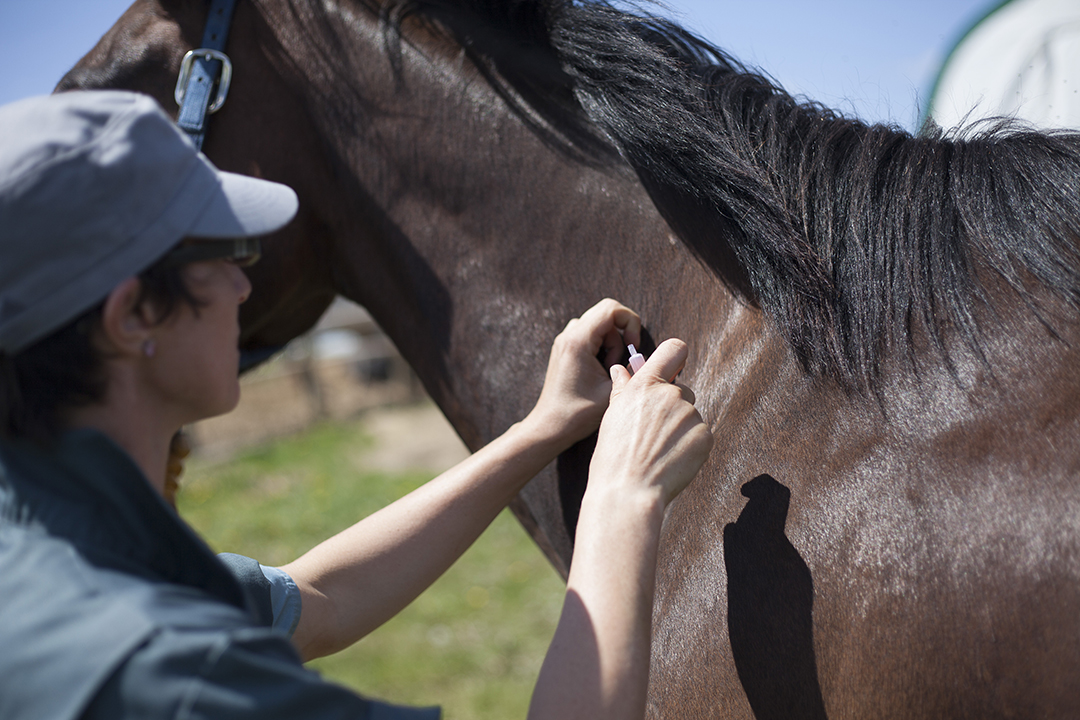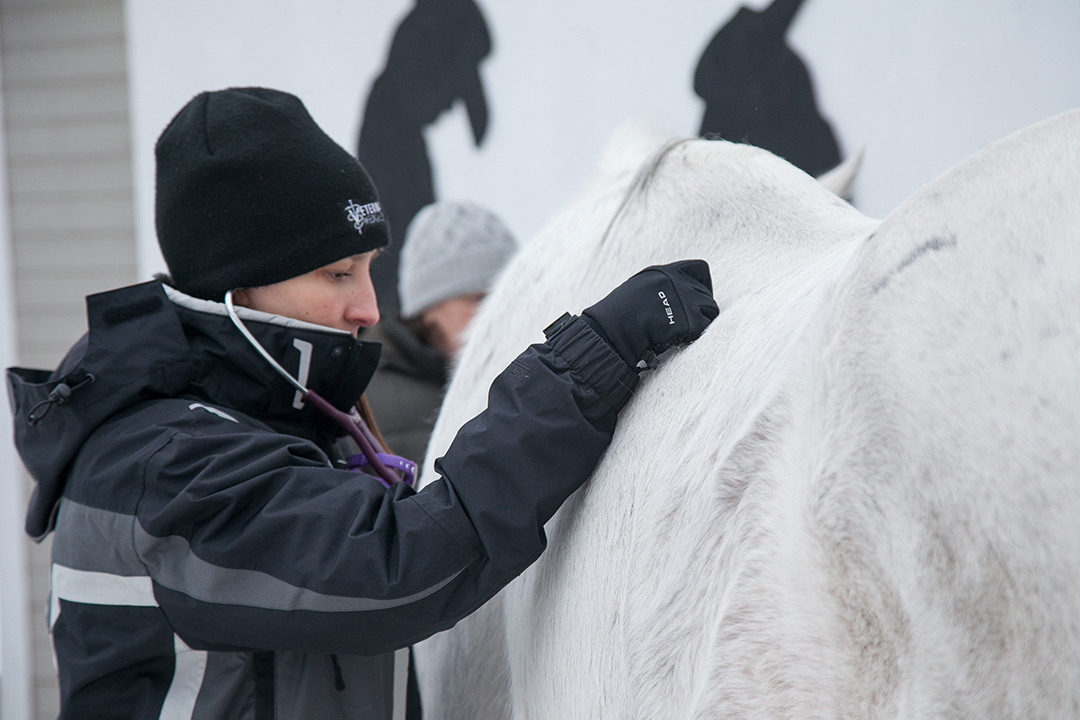
Infection control ingrained in equine team's work
Dr. Lea Riddell and her team members at the Western College of Veterinary Medicine (WCVM) are usually gearing up for a busy spring.
By Katie Brickman-YoungAt this time of year, the WCVM Equine Field Service team’s shifts are typically filled with 12-hour days of visiting barns and farms to help with vaccines, dental care and other general horse health tasks.
But this spring, the coronavirus pandemic has changed the way the team is providing services to horses and interacting with owners.
“The day-to-day work is really different. The types of cases and how we tend to those cases have changed,” says Riddell, a resident with the equine field service. “In March, we were strictly just emergency while we figured out the safest way for us to work. Now, we are doing more than just emergencies because our patients and their welfare are still our top priority.”
The Equine Field Service team is now operating in three teams with two to three members per team and with a shift schedule.
“We are a pretty tight-knit group and have been working together for quite a while,” says Riddell. “Working in smaller groups like this makes it easier for us to minimize risk.”
The veterinarians already take serious biosecurity precautions when attending to emergencies or standard calls, including frequent hand washing and changing clothes so not to spread any diseases.
The veterinarians are also doing their best to main physical distancing, encouraging horse owners to stay in their homes or at least two metres away while they work.
“Everyone has been really understanding about the new protocols. [At] most of the places we have been out to, everyone is in good spirits and trying to do their best to get through what is going on right now,” says Riddell.
“Our Field Service teams have always been cautious about being clean when going from farm to farm because there are a lot of communicable diseases in horses that you can carry as a veterinarian,” says Dr. Steve Manning, associate dean of WCVM clinical programs.
One common example is strangles, a bacterial infection that can cause respiratory disease. While the bacterium that causes strangles is chiefly transmitted through horse-to-horse contact, humans also contribute to its spread by reusing contaminated tools or wearing the same clothing when working with ill and healthy horses. People’s actions also play a role in the spread of the most common equine herpes virus species (EHV-1 and EHV-4), which can cause respiratory disease as well as outbreaks of abortions and neurological disease.
“We are constantly wiping down instruments after one person has touched it so there isn’t that cross-contamination. We are using a lot more gloves and masks … as a precautionary measure when we have to be in close proximity to other people,” says Manning.
The WCVM Equine Field Service team has handled previous outbreaks of EHV-1 in the Saskatoon area — including a recent EHV-1 neurologic case at a local boarding stable in January 2020. There are many comparable lessons learned from managing infectious diseases in animals and what is happening among human populations during the COVID-19 health crisis.
“I think that our experience with infectious diseases and our expertise at minimizing the risk or spread of that really makes veterinarians a well-suited group to know what to do and communicate that to their clients on what they should do when it is a human pathogen running through our population,” says Manning.
The usual circuit of clinics, races and shows begins to ramp up in March and continues in to the summer, but those events have been postponed or cancelled. While cancelling events and minimizing travel are common biosecurity tools that veterinarians and the horse industry use to manage equine disease in their local communities, the current shutdown of all public activities — including horse events — to slow the spread of a human disease is extraordinary.
“The most important thing is to pay attention to public health officials. The horse community is a small, but busy one,” says Manning. “Unfortunately, this spring and summer, things are going to be really quiet for the horse owner. But we must listen to what the officials are saying, and right now, that’s stay home.”

